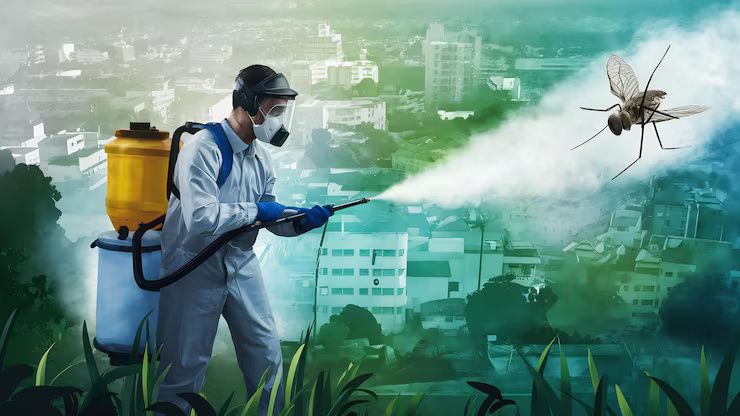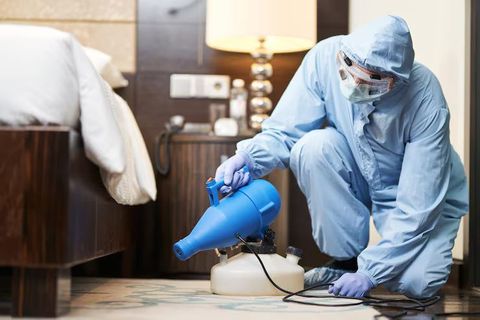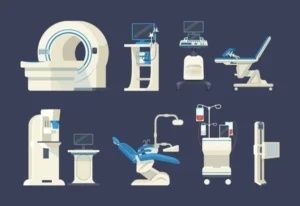The Complete Overview to Effective Pest Control Solutions
Pest control refers to the methods, practices, and strategies used to manage or prevent pests that affect homes, businesses, agriculture, and public spaces. Pests may include insects, rodents, birds, and other organisms that can damage property, contaminate food, and create health risks.
The need for pest control exists because pests naturally seek shelter, food, and breeding spaces in areas where humans live or work. Over time, climate changes, urban expansion, and increased trade have allowed pests to spread more easily across regions.

Modern pest control is not only about eliminating pests but also about preventing infestations through safe, science-based, and environmentally responsible techniques. This includes integrated methods such as sanitation, habitat management, structural repairs, trapping, biological controls, and regulated pest management products.
Importance – Why Pest Control Matters Today
Pest control plays a critical role in public health, food protection, and property safety. As environments change and population density increases, the need for reliable pest management becomes more important than ever.
Who It Affects
-
Homeowners dealing with insects, rodents, or termites
-
Farmers protecting crops and livestock
-
Food processing and hospitality businesses
-
Schools, hospitals, and public facilities
-
Property managers and building maintenance teams
-
Communities dealing with vector-borne diseases
Key Problems Pest Control Helps Solve
-
Property damage caused by termites, rodents, and insects
-
Food contamination in kitchens, restaurants, and food factories
-
Health risks related to pests that carry pathogens
-
Crop losses due to farm pests such as borers, aphids, and beetles
-
Disruptions in commercial operations
-
Poor hygiene and sanitation conditions in buildings
Regular and preventive pest control helps maintain safe environments, reduces repair costs, and protects the well-being of people, animals, and agricultural systems.
Recent Updates – Trends and Developments (2023–2024)
The pest control industry has seen several important advancements in techniques, products, and monitoring technologies. These developments aim to make pest control safer, more effective, and more environmentally responsible.
1. Smart Pest Monitoring Systems (2023–2024)
IoT-based devices that track rodent activity, temperature changes, and insect movement became more widely deployed in 2023–2024. These systems send real-time alerts and help reduce manual inspections.
2. Growth of Eco-Friendly Solutions
Biodegradable baits, botanical insecticides, and natural repellents became more popular since 2023 as industries looked for safer and more sustainable pest management options.
3. Heat and Steam Treatment Advancements
Heat treatment for bed bugs and certain insects gained more adoption in 2023–2024 because it avoids chemical use and provides rapid results.
4. Increased Public Awareness After Seasonal Outbreaks
Warmer temperatures and extended monsoon seasons in many regions in 2023–2024 led to increased mosquito activity, raising public demand for community-based pest control programs.
5. Focus on Integrated Pest Management (IPM)
IPM strategies, which combine environmental, biological, and structural methods, continue to grow as organizations adopt safer pest control practices.
A simple comparison table helps highlight how pest control has evolved:
| Category | Traditional Pest Control | Modern Pest Control (2023–2024) |
|---|---|---|
| Approach | Reactive | Preventive & Integrated |
| Tools | Chemical-based | Smart devices, eco-friendly solutions |
| Monitoring | Manual | Sensor-based |
| Environmental Impact | Moderate to High | Reduced |
| Cost Efficiency | Variable | Improved long-term |
Laws or Policies – Regulations Affecting Pest Control
Pest control practices are regulated by national and local agencies to ensure safety, environmental protection, and proper product usage. Regulations vary by country but generally include pesticide labeling, licensing requirements, and workplace safety standards.
India
-
Insecticides Act, 1968 regulates the production, sale, and use of insecticides.
-
Central Insecticides Board & Registration Committee (CIBRC) oversees product approvals.
-
State agriculture departments monitor compliance for farm-related applications.
-
Public health guidelines address mosquito and vector control programs.
United States
-
Environmental Protection Agency (EPA) regulates pesticides under the Federal Insecticide, Fungicide, and Rodenticide Act (FIFRA).
-
OSHA standards govern worker safety for handling pest control materials.
-
Local jurisdictions may have additional rules for structural pest management.
European Union
-
The Biocidal Products Regulation (BPR) ensures all pest control products meet safety and environmental standards.
-
Rules encourage reduced chemical dependency and proper use of integrated pest solutions.
-
Food safety agencies regulate pest control in food manufacturing environments.
Global Policies
-
Increasing movement toward non-chemical pest solutions
-
Standardisation of safety training for pest control professionals
-
Promotion of responsible pesticide use to protect biodiversity
These regulations help maintain safe environments, protect consumers, and support responsible pest management across industries.
Tools and Resources – Helpful Options for Better Pest Control Management
A wide range of resources supports individuals, facility managers, farmers, and businesses in planning and managing pest control more effectively.
Digital Tools and Apps
-
Pest ID Apps (Picture Insect, Pest Identifier) – Helps identify insects through photos.
-
Smart Trap Monitoring Systems – Used in commercial and agricultural spaces.
-
Vector Population Tracking Tools – Monitor mosquito densities and weather patterns.
Websites and Knowledge Platforms
-
National Pesticide Information Center (NPIC) – Offers safety guidelines and product information.
-
FAO Pest Management Resources – Provides agricultural pest management knowledge.
-
CDC Vector Control Guidelines – Covers public health pests and recommended practices.
-
Integrated Pest Management (IPM) Manuals by universities and research institutions.
Practical Tools and Supplies
-
Moisture meters to detect damp areas
-
UV fly traps and rodent monitoring stations
-
Protective equipment for safe handling
-
Pest risk assessment templates and checklists
These tools help users make informed choices, monitor environments, and improve long-term pest prevention.
FAQs – Common Questions and Clear Answers
Q1. What is the safest way to control pests in homes?
The safest approach is integrated pest management, which includes sanitation, sealing entry points, monitoring activity, and using approved products only when necessary.
Q2. How often should pest control be done?
The frequency depends on the environment and pest risk. Homes typically require quarterly visits, while businesses may need monthly monitoring.
Q3. Do pest control treatments prevent all pests permanently?
No method offers permanent prevention because pests return due to seasonal changes, structural gaps, and environmental conditions. Consistent maintenance is key.
Q4. Are eco-friendly pest control options effective?
Yes, natural repellents, biological controls, heat treatment, and low-toxicity products can be effective when used correctly and combined with preventive measures.
Q5. What signs indicate a pest infestation?
Common indicators include droppings, bite marks on materials, unusual odors, nests, damaged food packaging, or visible insects/rodents.
Final Thoughts
Effective pest control is crucial for protecting health, maintaining clean environments, and preventing property damage. Modern pest management combines technology, environmental safety, and preventive techniques to create long-lasting results. As regulations evolve and eco-friendly solutions grow, individuals and businesses have more options than ever to manage pests responsibly.
Understanding recent trends, available tools, and common best practices helps users take a proactive approach. Whether for homes, farms, or commercial facilities, the goal remains the same—creating safe, hygienic, and healthy spaces through well-planned pest control strategies.






